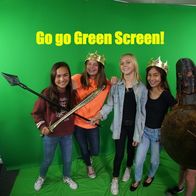monday, october 8, 2018

WELCOME BACK! Today, we'll finish our Agricultural Revolution worksheet that we started last week. Here are those videos for you if you need to finish any. MAKE SURE YOU ARE LOGGED IN TO EDMODO to view these
lbusd.edmodo.com/post/314002243/Agricultural-Revolution-Activity-Please-complete-worksheet
THEN!!!
Please open this link and CLICK File and then CLICK Make a Copy and then fill it out using what you learned from the worksheet.
docs.google.com/presentation/d/1wfHedugpB-runSgvrd_Z1bXoVAoNLMzp5ZGSx21YZ9s/edit?usp=sharing
HOMEWORK: Please spend 20 minutes on the Google Slide about the Agricultural Revolution
lbusd.edmodo.com/post/314002243/Agricultural-Revolution-Activity-Please-complete-worksheet
THEN!!!
Please open this link and CLICK File and then CLICK Make a Copy and then fill it out using what you learned from the worksheet.
docs.google.com/presentation/d/1wfHedugpB-runSgvrd_Z1bXoVAoNLMzp5ZGSx21YZ9s/edit?usp=sharing
HOMEWORK: Please spend 20 minutes on the Google Slide about the Agricultural Revolution
tuesday, october 9, 2018
Teacher led a conversation and Venn Diagram on the board comparing the lives of Hunter Gatherers and that of Farmers. We discussed the Agricultural Revolution and how farming changed the world. People began living in communities and those developed into villages and then towns. We watched a clip about the importance and role of water...this video is titled How Earth Changed History and really covers how people found water and managed to control it for farming purposes in the Agricultural Revolution.
We added one Slide to the overall Agricultural Revolution google slide. That new page is titled Studying the Past and students should define the following: Primary Source, Secondary Source, and Oral History. I'm posting those pages from the Nat Geo book below!
We added one Slide to the overall Agricultural Revolution google slide. That new page is titled Studying the Past and students should define the following: Primary Source, Secondary Source, and Oral History. I'm posting those pages from the Nat Geo book below!
HOMEWORK: finish the Agricultural Revolution google slide
WEDNESDAY, OCTOBER 10
Today, we learned about Cultural Hearths. These are specifically 4 places that the Agricultural Revolution took hold and became centers of new technology, ideas, and practices. We can think of them as 4 big Neolithic towns that never became a civilization per se, but were an important step TOWARD civilization. We completed notes on a worksheet and I'm posting the pictures of those pages below :)
HOMEWORK: finish the worksheet from class
thursday/friday, OCTOBER 11 AND 12
|
Today, we reviewed what we learned about the ancient Neolithic towns of Oaxaca, Faiyum, Catalhoyuk, and Banpo. Then, we took notes on the 5 traits of civilization...exactly what it took to advance to the level of a civilization. The civilization of Sumer will be our ancient example for this exercise.
Students fill out a chart on the 5 traits with their collaborative groups. We identify those 5 traits and give examples from Sumer and then compare that with examples of the 5 traits from today's world. Then, students create a creative project that outlines what they learned: poster, rap song, wevideo, adobe spark video, etc. |



